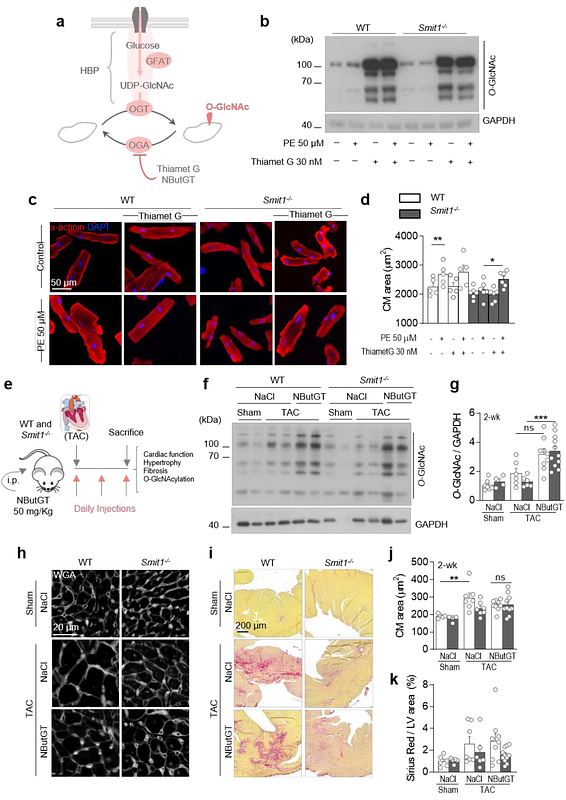Sodium myo-inositol cotransporter-1, SMIT1, promotes cardiac hypertrophy and fibrosis in pressure overloaded mouse hearts

Sodium myo-inositol cotransporter-1, SMIT1, promotes cardiac hypertrophy and fibrosis in pressure overloaded mouse hearts
Marino, A.; Cumps, J.; Guilbert, L.; Baufays, C.; Ginion, A.; Ferte, L.; Battault, S.; Ambroise, J.; Bearzatto, B.; Zuurbier, C. J.; Lezoualc'h, F.; Pestiaux, C.; Pyka, G.; Kerckhofs, G.; Tyteca, D.; Bouzin, C.; Bertrand, L.; Horman, S.; Beauloye, C.
AbstractBackground: Sodium myo-inositol cotransporter-1 (SMIT1) belongs to the sodium-glucose cotransporter (SGLT) family. SMIT1 is expressed in cardiac cells, including fibroblasts and cardiomyocytes. However, the function of SMIT1 in the heart remains unknown. Methods: We used a model of pressure overload induced by transverse aortic constriction in wild type (WT) mice and mice lacking SMIT1 (Smit1-/-), combined with echocardiography, immunoblot and staining, contrast-enhanced microfocus computed tomography, and RNA-sequencing to evaluate the contribution of SMIT1 in cardiac hypertrophy, fibrosis and function. In addition, we used primary cultures of adult mouse and neonatal rat cardiomyocytes to define the molecular pathways affected by SMIT1. Results: We found that aortic banding fails to induce systolic dysfunction, cardiac hypertrophy and fibrosis in Smit1-/- mice, in contrast to WT controls. Deletion of SMIT1 reduces cardiac O-GlcNAcylation and maintains basal levels of Carabin following hemodynamic stress. In the absence of SMIT1, Carabin inhibits calcineurin/NFAT and Ras/ERK1/2 pathways, putting a brake on transcriptional reprogramming and further development of cardiac hypertrophy. In vitro, we showed that the lack of SMIT1 mitigates phenylephrine-induced hypertrophy and calcium increase in isolated cardiomyocytes. Conclusions: This work establishes SMIT1 as a key driver of hypertrophy, suggesting that pharmacological inhibition of this SGLT member can serve as a potential strategy to prevent or treat pathological hypertrophy and heart failure.